Walkable cities are cities where people can quickly and safely walk from one place to another, and these cities often have many amenities for people who walk and live in the city. Walkability can be measured by the number of people using public transportation, the number of pedestrians, the number of accidents, and the number of kids walking to school.
“A walkable city is a livable city.”
– Jan Gehl
From shops and restaurants to historical landmarks and parks, these cities have it all and offer residents and visitors a chance to explore everything they have to offer without relying on driving a car. Here we’ll discuss a few of the world’s top walkable cities.
Discovering the World on Foot: Experiencing the Essence of Walkable Cities in the World
Embarking on a journey through the most walkable cities in the world allows travelers to fully embrace the essence of each destination. It is through walking that one truly absorbs the varied sights, sounds, and flavors that each locale has to offer, interacting with the cities in their purest form, and experiencing the vibrancy and charm inherent to each region.
“The top walkable cities in the world are those that encourage active transportation, promote healthy lifestyles, and reduce environmental impact.”
– The Guardian
San Francisco stands out among the most walkable cities in the world, offering a medley of neighborhoods, each with its distinctive allure, beckoning explorers to traverse its diverse landscapes. Whether it’s navigating through historic landmarks or the lively streets, the city’s structured grid layout and extensive public transit system accentuate the pedestrian experience, encouraging immersive explorations on foot.
Paris, the beacon of French elegance, is a mosaic of historical landmarks and scenic pathways, standing as a paramount destination for those who prefer to explore on foot. Similarly, the cobblestone streets of Quebec City, with their echoes of French charm, serve as a gateway to the rich tapestry of historical architecture and European elegance.
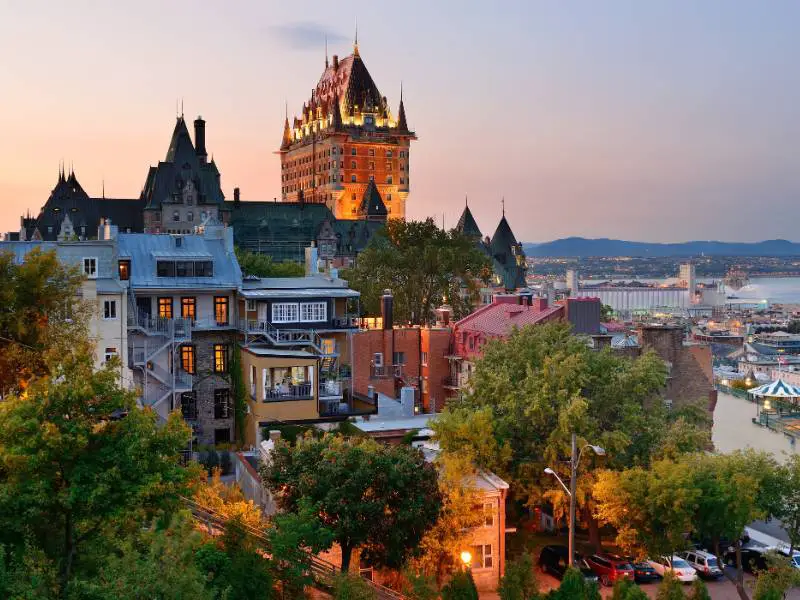
Cobblestone streets are timeless symbols of historical significance and aesthetic beauty in many walkable cities in the world. Wandering along these storied pathways provides a visual feast, where each stylish boutique and lively street, like those of Greene and Wooster, offer a sensory explosion, reflecting the bustling life and vibrancy of these locales.
Historic Architecture and Public Spaces: The Seamless Fusion
Cities with well-integrated pedestrian infrastructure, meticulously planned public spaces, and mixed-use developments exemplify the seamless blend of convenience, culture, and commerce. The thoughtful design of these walkable cities enables residents and visitors alike to appreciate the richness and cultural diversity of their surroundings, exploring pedestrian-friendly lanes and plazas lined with historical architecture that whisper tales of bygone eras.
Lace Up Your Walking Shoes
To uncover the soul and essence of walkable cities worldwide, a pair of comfortable walking shoes and a spirit of adventure are essential. Whether meandering through historic industrial centers, vibrant parks like Parque Lleras, or the picturesque Peatonal Carabobo, ensure your walking shoes are primed for the journey, navigating diverse terrains and unveiling these cities’ multifaceted environments.
A Tapestry of Cultures: From North America to Europe
Meandering through walkable cities unfolds a world brimming with architectural marvels and cultural wealth, from the iconic museums of North America to the hidden jewels of Eastern European cities. A stroll through the enchanting Italian city of Florence, recognized as one of the most walkable cities in the world, alongside excursions through other vibrant cities, uncovers a spectrum of experiences, landscapes, and stories waiting to be discovered.
Exploring the most walkable cities in the world, from the historical and vibrant streets of San Francisco to the elegant boulevards of France and Quebec City, offers an unparalleled, immersive experience. Each step within these cities reveals a harmonious blend of historic architecture, cultural richness, and public spaces, allowing explorers to fully absorb the essence of each locale. So, lace up your walking shoes and let the journey through the vibrant tapestry of the world’s most walkable cities unveil the unique narratives and undiscovered splendors hidden within their folds.
Top 10 Walkable Cities in the World
1. Munich
Munich, with its inviting pedestrian-friendly city center and charming Bavarian settings, holds a significant place among the top walkable cities in the world. Visitors and locals can immerse themselves in the picturesque ambiance of The English Garden, one of the largest parks in Europe, adorned with serene lakes, historic follies, and diverse cultural offerings such as beer gardens and a Japanese teahouse. This urban paradise represents just a fragment of Munich’s walkable charm, where losing hours of window shopping and marveling at architectural marvels like the Frauenkirche church and numerous beautiful public buildings is a common delight.
“A great city is not measured by its size or its skyline, but by the quality of its public spaces and the ease of getting around on foot.”
– Jeff Speck
Not only is Munich a paradise for tourists seeking to explore on foot but it is also favored by locals as a highly walkable city. The city center’s compact nature and intuitive layout make navigation simple and enjoyable. Pedestrian-friendly streets, many reserved exclusively for foot traffic, coupled with an efficient public transportation system, allow both residents and visitors to traverse the city with ease and efficiency. Furthermore, Munich’s commitment to promoting eco-friendly transportation is evident in its extensive biking infrastructure, featuring dedicated lanes and paths crisscrossing the city, reinforcing its status as one of the premier walkable cities in the world.
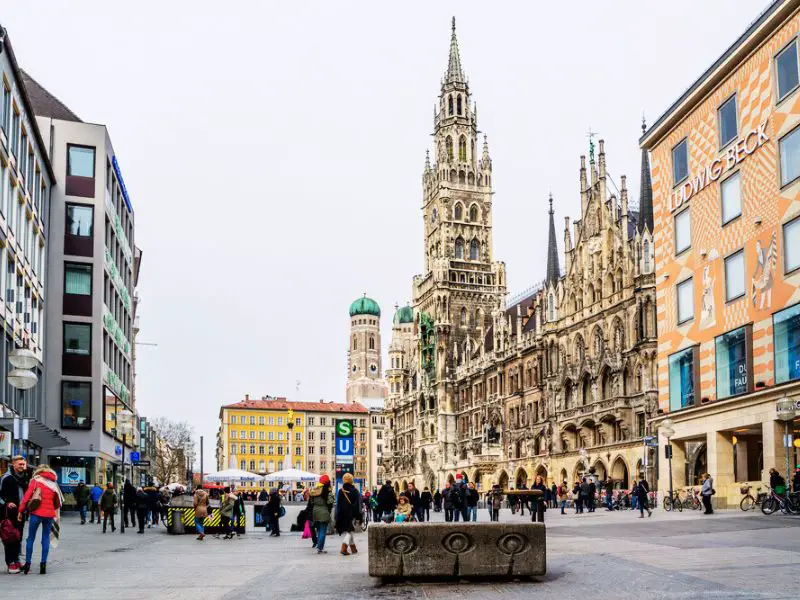
2. Kyoto
Kyoto, distinguished as one of the most walkable cities in the world, presents a harmonious blend of historical richness and contemporary vibrancy—a city where one might get lost in its timeless charm for days. Having served as Japan’s imperial capital for over a millennium, it boasts a plethora of temples, unique tea ceremonies, and intricate floral arrangement customs, alongside its bustling, modern city life.
While the city’s diverse attractions are scattered, necessitating public transportation for distant travels, Kyoto’s compact city center, and flat terrain make it ideally suited for exploration on foot. The pedestrian-friendly streets, coupled with designated crossings, afford everyone the opportunity to immerse themselves in the rich cultural heritage of the city. A stroll around the bustling Kiyomizu-Dera temple area, dotted with shrines and food booths, is particularly enlightening. With its efficient public transportation system offering convenient alternatives for locals and visitors alike, Kyoto stands out as a fantastic city for those looking to experience the essence of walkable cities in the world.

3. Helsinki
Helsinki is often rated as one of the world’s most livable cities and is praised for its commitment to developing walkable neighborhoods and a car-free populace. Enjoy feasting your eyes on cutting-edge aesthetics that combine with Finnish tradition as you travel through this area, renowned for its forward-thinking Scandi design.
Helsinki is considered a walkable city due to its compact city center, which is easy to navigate on foot. The city also has many pedestrian-friendly streets, several pedestrian-only areas, and numerous parks and waterfront areas for locals to enjoy. Helsinki’s public transportation system is excellent, but many locals prefer to walk or bike, thanks to the city’s extensive biking infrastructure. All these factors make Helsinki a superb city for exploring on foot.
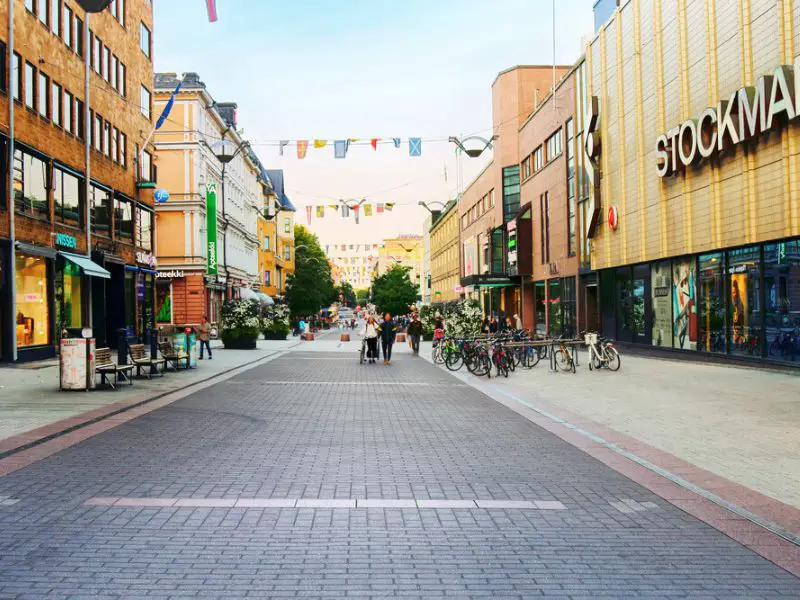
4. New York
New York, renowned as one of the most walkable cities in the world, invites explorers to roam its grid-patterned streets and diverse neighborhoods like SoHo, Little Italy, and Central Park. With most locals preferring to walk and the city receiving high ratings for its pedestrian-friendly nature — particularly in areas like Times Square, which is reserved for pedestrians only — it’s an ideal location for those who love city strolls. When needed, the excellent metro system is also available for use, making the exploration of this vibrant city even more accessible.

5. Perth
Perth is attractive for many reasons beyond its immaculate beaches and clear sky; it also has a vibrant arts and culture scene. Choose from various restaurants and pubs as you explore the city’s laid-back streets, or unwind in a beautiful urban park while listening to the wind whistle through the gum trees.
Perth is a walkable city due to its unique combination of modernity and natural beauty. It is the fourth most populous city in Australia, but its compact city center is easy to navigate on foot, with many attractions within walking distance. Perth’s pedestrian-friendly streets are designed to accommodate pedestrians and cyclists, with dedicated bike lanes and paths throughout the city.
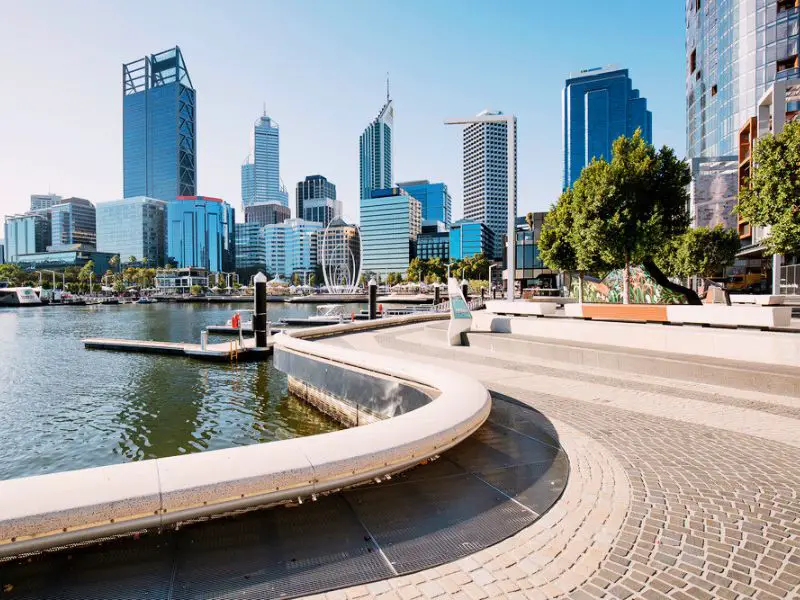
6. Marrakech
Marrakech’s old center, or medina, is a UNESCO World Heritage Site quickly explored on foot and is home to a wealth of architectural marvels. The mazelike streets of Marrakech’s souks, where you can shop for Berber rugs, exotic spices, and brightly colored babouches, are a must-see for every visitor. Traveling south will bring you to the remains of the 16th-century El Badi Palace and the bustling Jemaa El-Fnaa plaza, home to several markets and street performers. And if you’re looking for peace, go to the western Menara Olive Gardens.
Marrakech’s compact city center, pedestrian-friendly streets, rich cultural heritage, pleasant climate, and good public transportation make it a walkable city for everyone. Its historical landmarks and attractions are within walking distance of each other, and many locals prefer to explore the city on foot.
7. Florence
Given the traffic in Florence’s historic center and inhabitants’ access to taxis, buses, and taxis, this city encourages people to walk around. Walking in the narrow cobbled streets of Florence feels precisely like walking in an outdoor museum home to several historical sites close to one another.
The Cattedrale de Santa Maria del Fiore, a well-known landmark, is followed by the Ponte Vecchio, a bridge that was spared from German bombing during World War II, and the Piazzale Michelangelo, from which one can enjoy a breathtaking view of both the city and the surrounding Tuscan countryside. Then if you’re tired from walking, rest your weary feet at one of the many pubs, eateries, and cafés in almost every area.
Florence is a walkable city due to its compact city center, pedestrian-friendly streets, historical and cultural significance, scenic views, and pleasant climate. Many of the city’s landmarks and attractions are within walking distance of each other, and the city’s narrow streets are perfect for exploring on foot. The surrounding hills and countryside offer many scenic walks and hiking trails. All these factors make Florence a great city for exploring on foot.

8. Vancouver
Vancouver may be Canada’s third-largest city, but it’s a paradise for pedestrians. The government strongly promotes walking due to the proactive mobility strategy and the newly issued pedestrian guidance maps. One of the city’s most renowned walks is down False Creek to Granville Island, where people may visit the Public Market and buy locally farmed and fresh produce.
Vancouver is a beautiful city nestled between mountains and sea, and it’s also a walkable city for locals. The city boasts several pedestrian-friendly streets with designated crossings and low vehicle traffic, making it easy for locals to explore the city on foot. Vancouver is also known for its extensive biking infrastructure, which includes dedicated bike lanes and paths throughout the city. For those who prefer a more active mode of transportation, biking is a great option to explore the city while enjoying scenic views.
9. Melbourne
Melbourne is Australia’s second biggest city, a contrasting site where Victorian architecture coexists with urban parklands and sparkling skyscrapers that meet the beautiful harbor. The beauty starts from the Yarra River, and vegetation stretches from the Alexandra Gardens to the stunning Royal Botanic Gardens.
On the other side, stroll through Melbourne’s CBD, a historic arcade and laneways filled with chic shops, cafés, restaurants, and must-see attractions such as the Old Melbourne Gaol. There’s also St. Kilda Beach. Finally, the elevator to the Eureka Skydeck 88, the tallest platform in Melbourne, can take you to a panoramic view of the city.
Melbourne is a walkable city due to its pedestrian-friendly streets, compact city center, public transportation, walkable areas, biking infrastructure, and rich cultural significance. Locals can explore the city’s unique architecture, street art, and cafe culture on foot or bike. The city’s laneways and alleys offer an exciting adventure for those who love to wander. With excellent public transportation, walking and biking can be great options for exploring Melbourne’s attractions.
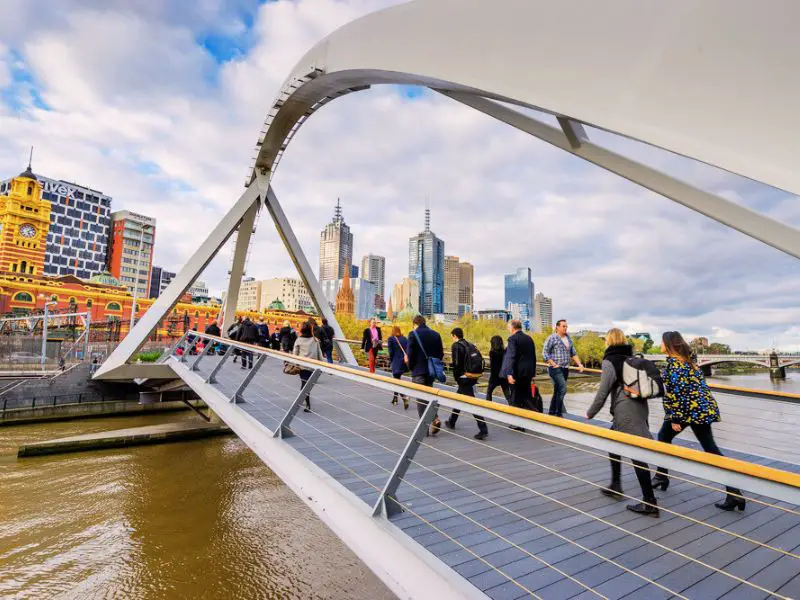
10. Venice
Venice is one of the greatest walking cities in the world since cars are not allowed at all inside the city limits, making it the perfect pedestrian-friendly vacation. Walking in Venice gives the event a more accurate feel and helps you discover the details and jewels that make it unique. The best time to visit Venice is between April and September to avoid strolling through tourist-packed streets.
Venice is a magical and romantic city perfect for exploring on foot. Its pedestrian-only streets, compact city center, canals, and bridges create a unique and enchanting atmosphere that makes walking around the city a delightful experience for locals. The absence of cars means that locals can stroll without worrying about traffic while enjoying the city’s rich cultural heritage and scenic views. Walking along the narrow streets, hidden alleyways, and across the numerous bridges of Venice is like stepping back in time and offers an immersive experience of the city’s unique architecture and history.
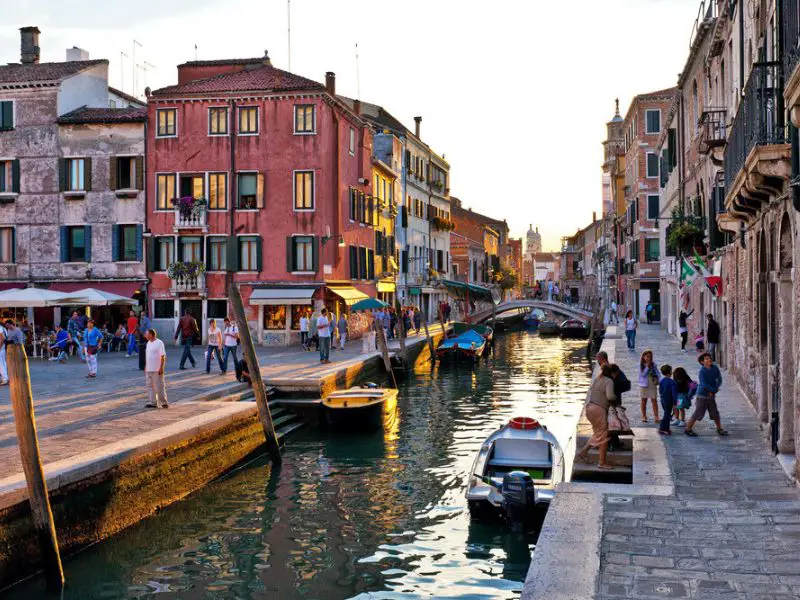
Bottomline
A city’s sustainability depends on its residents’ well-being. Fewer cars can be a big win for a city’s sustainability, given the high environmental and economic costs of car emissions and congestion.
The walk score of cities is an essential metric of how well a city can attract and retain businesses and residents within city limits. Still, a city with a vibrant downtown, many green spaces, and separated bike lanes might be walking-friendly. Still, the need for more supermarkets within city limits can force some residents to drive long distances to get groceries and other supplies. An analysis of which cities make the most sense for walkable living includes public transit, park space, affordable housing, and weather.
You may also be interested in: Benefits of Walkability, Countries That Will Survive Climate Change



;?>/smartquizbuilder/includes/images/sqb-registration-img.jpg)



